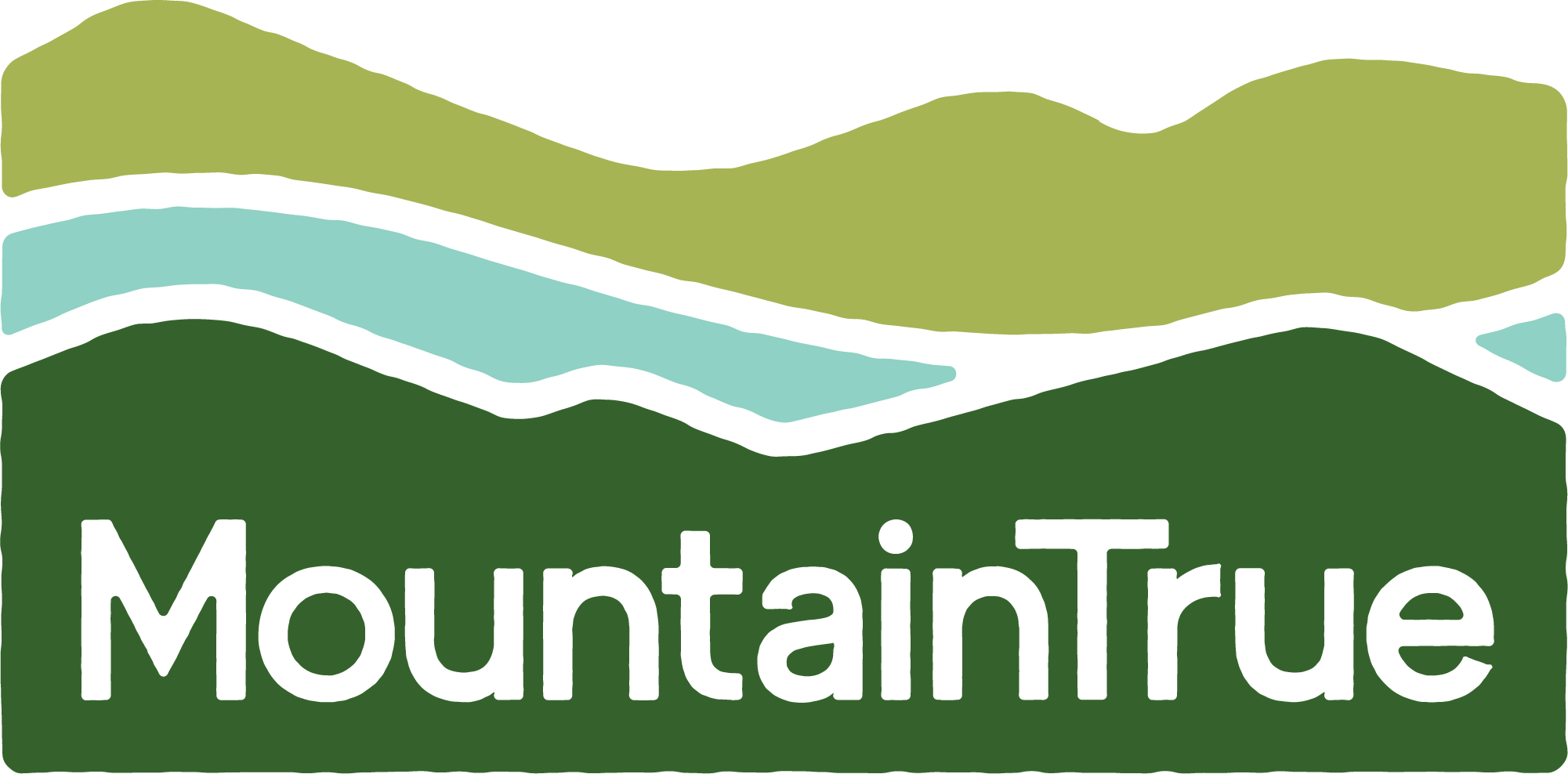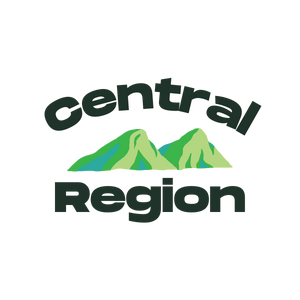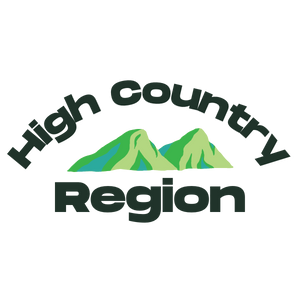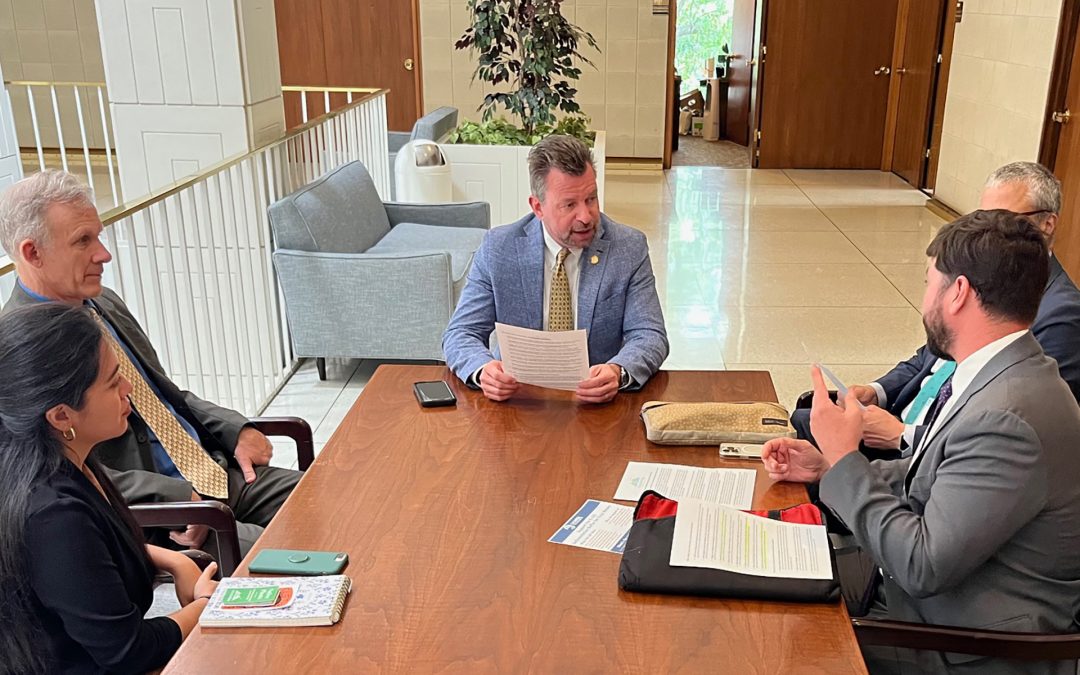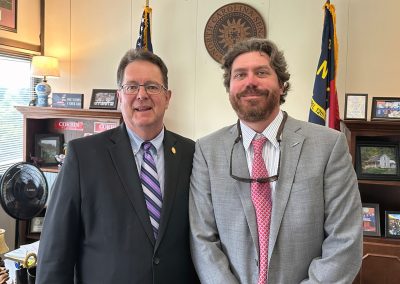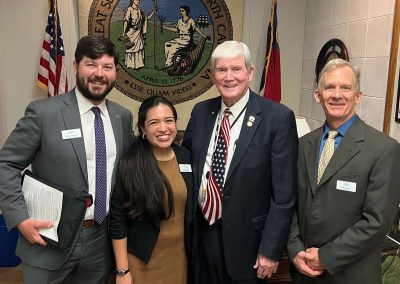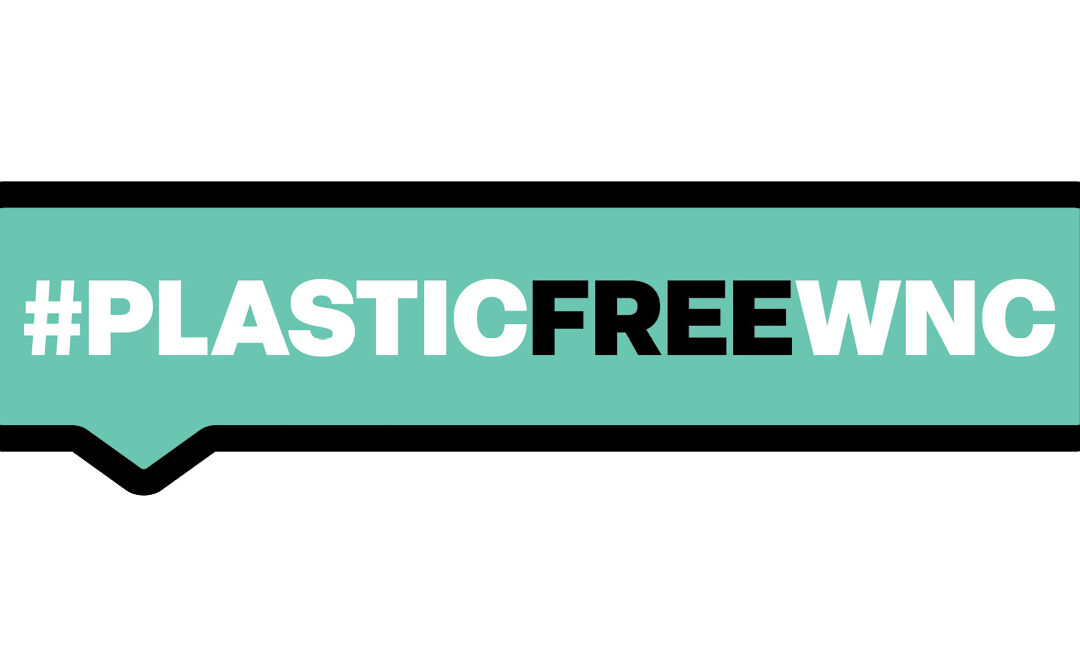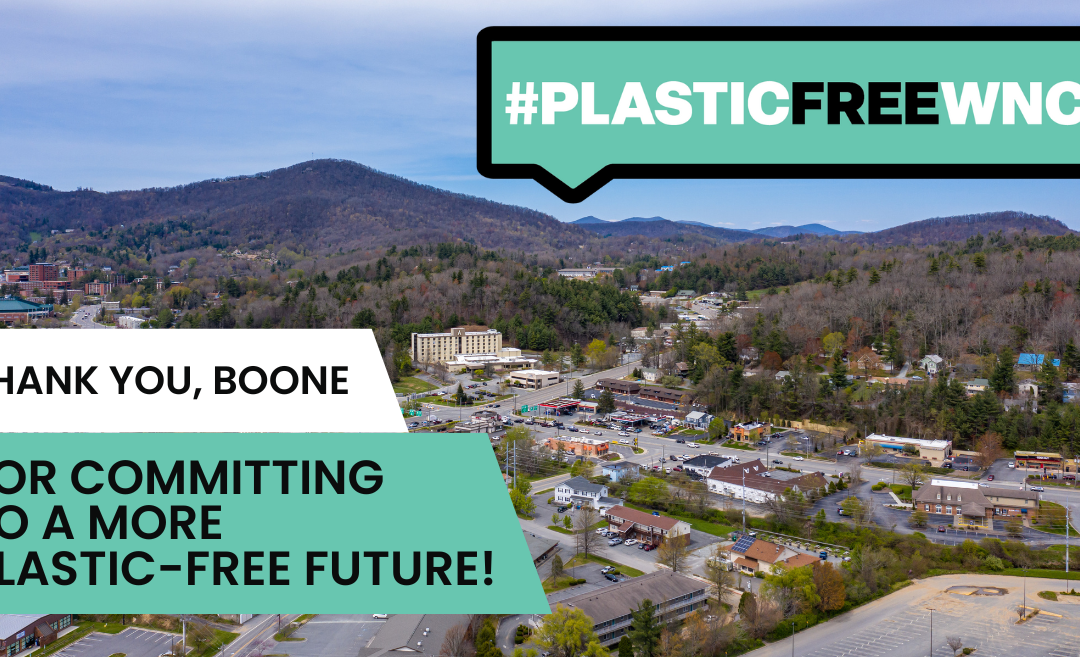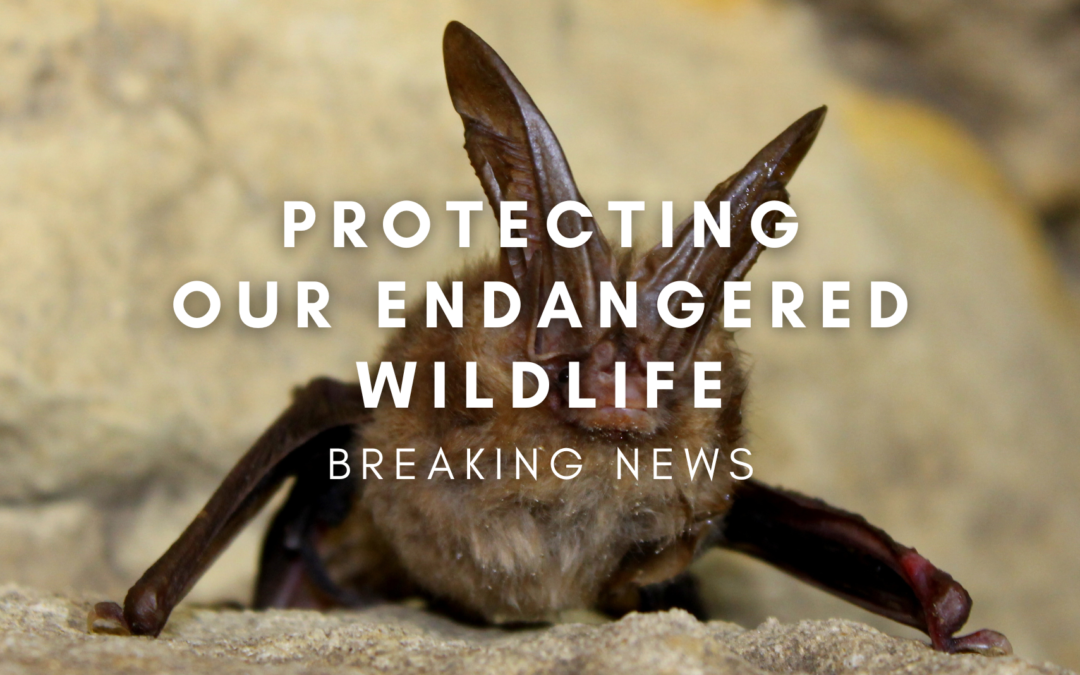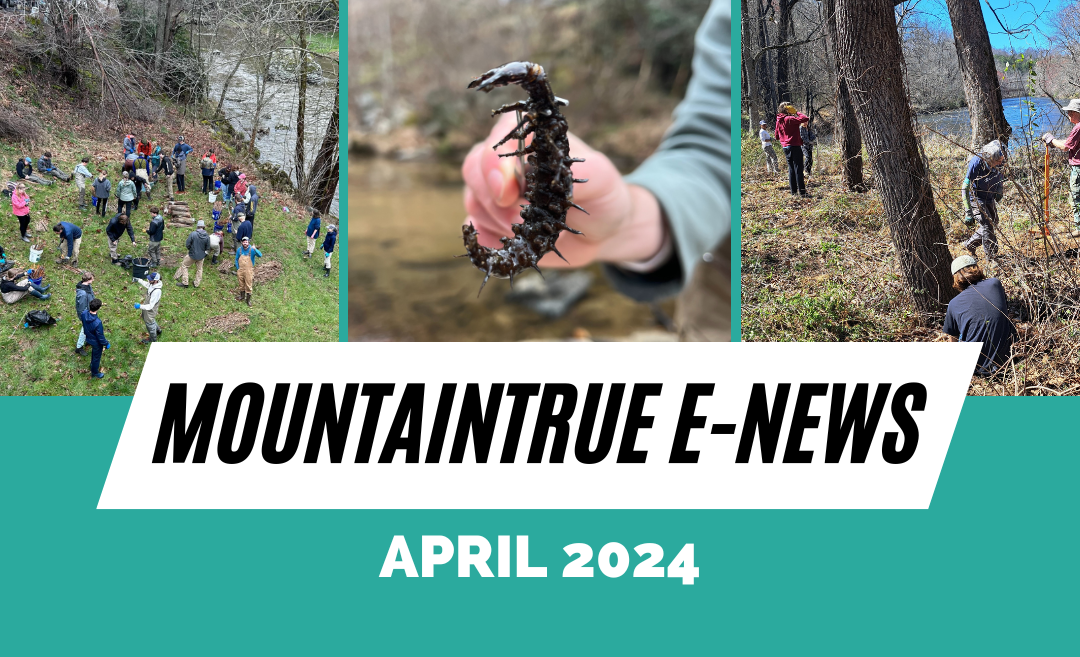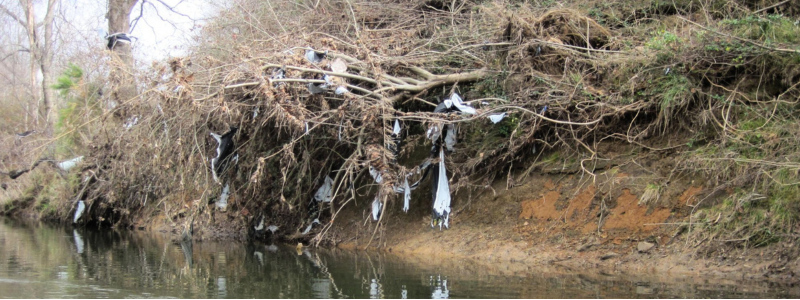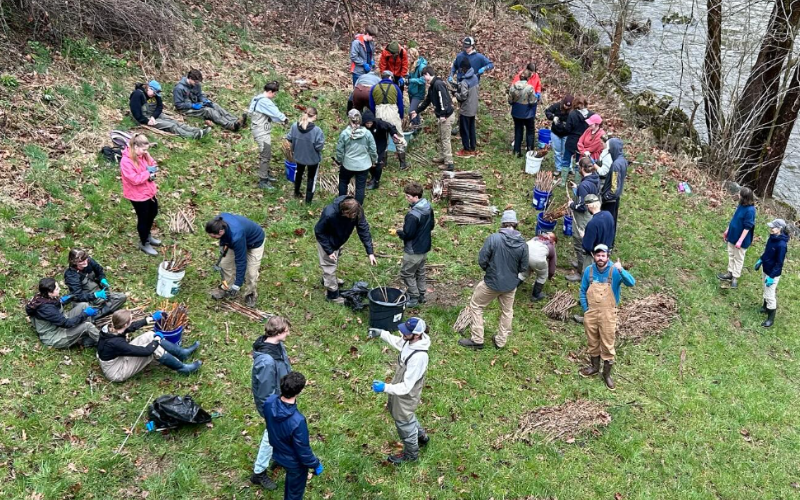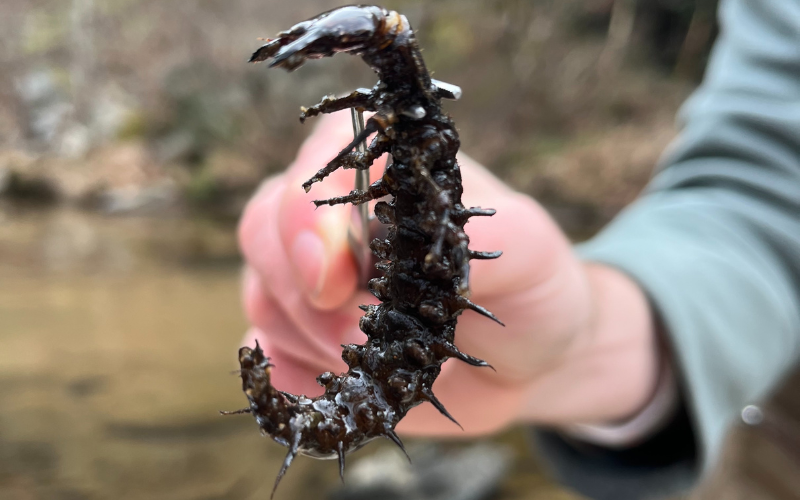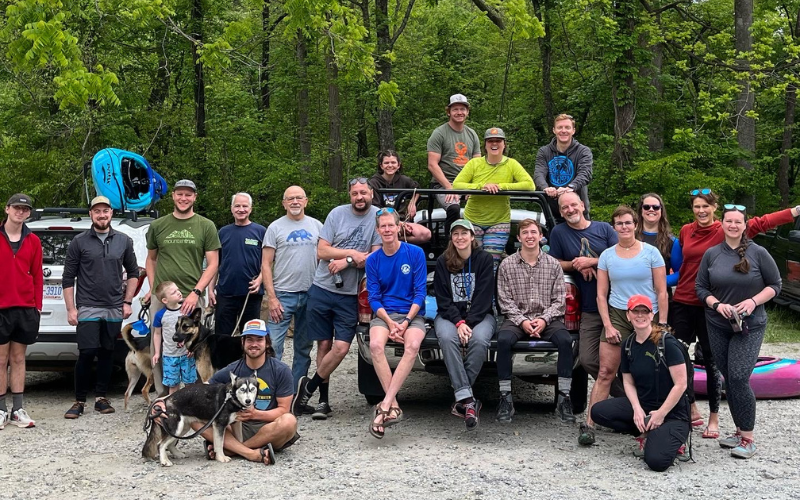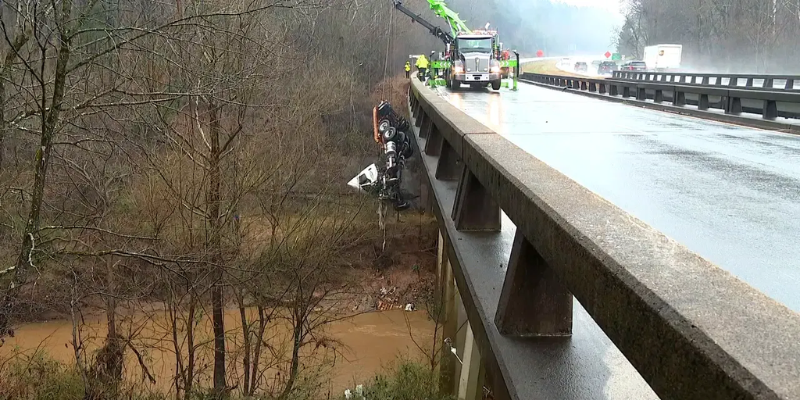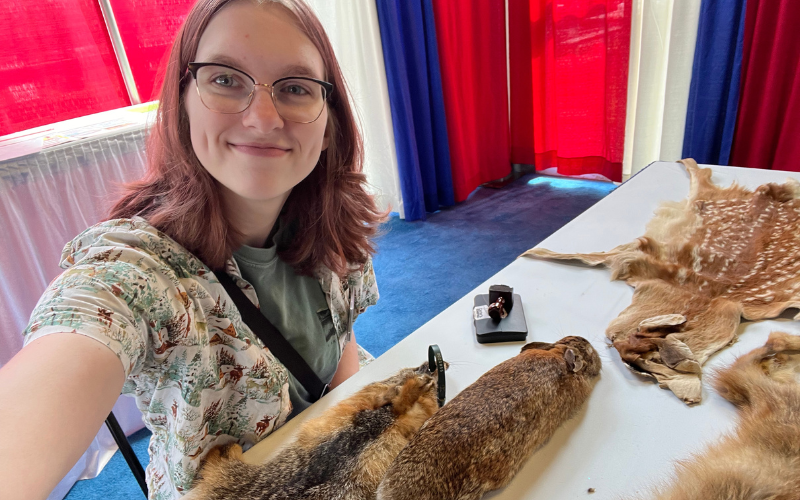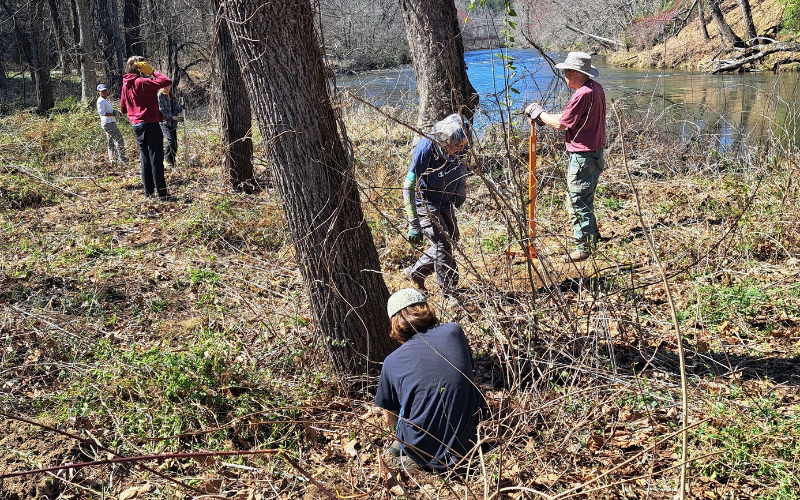
MountainTrue’s June 2024 E-Newsletter
MountainTrue’s
June 2024 E-Newsletter
June news from MountainTrue’s four regional offices:
Central Region News
Click here to read
High Country News
Click here to read
Southern Region News
Click here to read
Western Region News
Click here to read
Central Region News
A message from Executive Director Bob Wagner:
MountainTrue volunteers are awesome! With spring upon us and summer arriving soon, our volunteers are busy collecting water samples for our annual Swim Guide Program so that you can know if your favorite swim sites are safe. At our BioBlitz this past Saturday, volunteers identified hundreds of plants along the Nolichucky River, which may one day help the area obtain a Wild & Scenic designation — our nation’s strongest form of protection for free-flowing rivers and streams. Throughout the summer, our volunteers will remove invasive plants, advocate for environmental protection to local leaders, and more.
Lastly, I want to give our Board of Directors a special shoutout. These dedicated volunteers commit significant time to learning about, supporting, and guiding MountainTrue. They help us navigate the business side of running a nonprofit and the programmatic direction. They play a critical role in our success. Thanks to all of you who give time and resources to protect our rivers, forests, and mountains!
Help us clean the Swannanoa River this summer
Join Wicked Weed, Dewey Property, and MountainTrue’s French Broad Riverkeeper for a river cleanup on Saturday, June 8. Stick around for the after-party at The Outpost. Learn more + register here!
See Michael Franti & Spearhead at the Salvage Station on June 28-29
Asheville’s cherished summer tradition returns to the scenic banks of the French Broad River for its 8th year. Music icon Michael Franti, renowned for his global performances and deep commitment to social causes, will headline a two-night musical extravaganza at the Salvage Station, continuing his support for the environmental efforts of the French Broad Riverkeeper. Get your tickets here.
Catch us at AMB Mills River for our June pint night
Join us at Appalachian Mountain Brewery’s Mills River location from 5-8 p.m. on Tuesday, June 11, for a MountainTrue pint night. MountainTrue will receive $1 of all beers poured on June 11. Can’t make it on the 11th? MountainTrue will be the featured nonprofit for the month of June and will receive $1 of all pours of AMB’s chosen beer for June: Czech One, Two — a classic Czech lager.
Volunteer with us on the French Broad Paddle Trail
Get out on the river with your French Broad Riverkeeper and help clean up a section of the French Broad Paddle Trail on Friday, July 19, near Alexander, NC! This will be a paddle-based cleanup, with the option to stay on land to clean up the access points and roadside areas if paddling is not of interest. Find out more or register!
Paddling Film Fest: August 22 in Asheville, NC
Join us for the Paddling Film Festival World Tour at New Belgium Brewing in Asheville, NC, on August 22! Organized by Paddling Magazine and Rapid Media, sponsored by Headwaters Outfitters, and hosted by New Belgium Brewing, this event is a fundraiser for MountainTrue’s French Broad Riverkeeper program, which includes Swim Guide and the French Broad Paddle Trail. You’ll be inspired to explore rivers, lakes and oceans, push extremes, embrace the paddling lifestyle, and appreciate the wild places. Find out more and buy tickets!
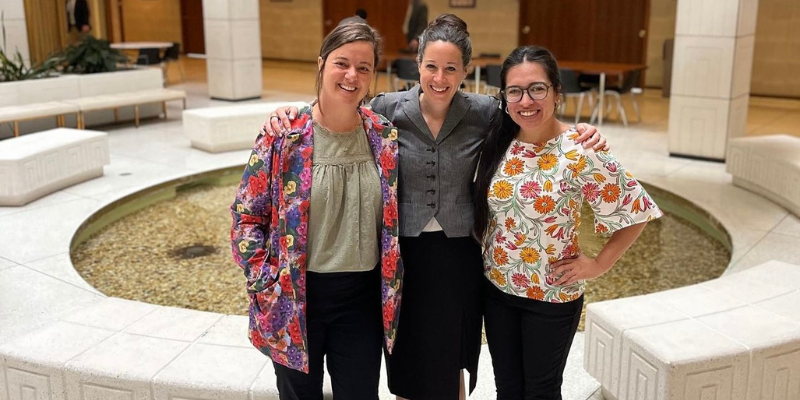
Photo: Green Riverkeeper Erica Shanks (left), Development & Engagement Manager Amy Finkler (center), and Southern Regional Director Nancy Díaz (right) pose for a photo before meeting with elected officials in Raleigh.
MountainTrue advocates for environmental priorities in Raleigh
At the beginning of May, our legislative advocacy team traveled to Raleigh to champion key environmental initiatives during the NC General Assembly’s short session. We met with several legislators to discuss stormwater pollution reduction, rural septic system repairs, E. coli monitoring in the French Broad River, and securing State Trail designations. Learn more about our advocacy efforts and legislative priorities in our latest Raleigh Report.
Madison County cryptocurrency ordinance update
With its moratorium set to expire this month, Madison County Commissioners unanimously approved language to amend their land use ordinance to regulate data processing facilities, including cryptocurrency mining operations. During the year-long moratorium, MountainTrue shared with the county a draft ordinance we developed in response to cryptocurrency mines in Cherokee County and advocated for the adoption of updated ordinance language to regulate cryptomine use. The updated ordinance now regulates small data processing facilities (<10,000sf), which would be permitted in Madison County’s commercial districts, and permits large facilities the county’s industrial districts. MountainTrue is grateful to Madison County for stepping up to regulate this potentially disruptive industrial use and keep it out of agricultural and residential zoned areas.
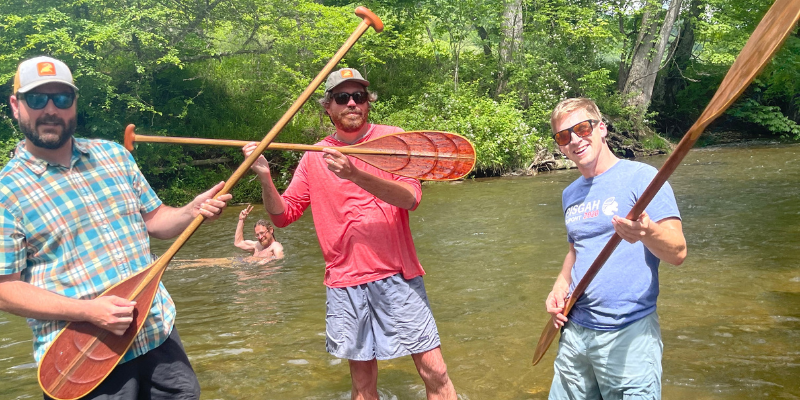
Photo: MountainTrue Deputy Director & General Counsel Gray Jernigan (left), Watauga Riverkeeper Andy Hill (center), and French Broad Paddle Trail Manager Jack Henderson (right) showcase three handmade paddles crafted by Broad Riverkeeper David Caldwell.
Win a sweet paddle made by the Broad Riverkeeper!
Want to paddle in style? Grab a raffle ticket for a chance to win a paddle designed and crafted by Broad Riverkeeper David Caldwell! Proceeds support MountainTrue and the Broad Riverkeeper program. This paddle is made of walnut, basswood, oak, and mahogany; it’s 150 cm long and weighs 32 oz. Unlike most “production” paddles, which have a hard finish, Caldwell Carvings’ paddles have an oil finish that is warm to the touch and easily maintained. The raffle winner will be drawn on September 14. Click here for full guidelines or to purchase tickets.
Just released: Pirani x MountainTrue reusable Hellbender cup
Pirani’s mission is to empower everyday heroes in safeguarding our planet through raising eco-awareness and creating high-quality, sustainable solutions to single-use products. Forget those disposable party cups and party on sustainably! Sales of these special edition cups benefit MountainTrue. Get your Hellbender cup now (and receive free shipping on your Pirani cup through the end of June!)
MountainTrue partners with Sugar Hollow Solar
Something exciting is brewing in the heart of the Southern Blue Ridge Mountains — a new collaboration between MountainTrue and Sugar Hollow Solar, a forward-thinking solar power company! This partnership isn’t just about harnessing the sun’s energy; it’s about fostering a community committed to a greener, more sustainable future. From now until September 30, 2024, Sugar Hollow Solar is running an inspiring referral program. For every new customer who signs a solar contract based on your referral, Sugar Hollow Solar will generously donate $50 to MountainTrue. And that’s not all – as a token of appreciation, you, the referrer, will receive $250. But if you’re feeling particularly generous, you can opt to have the full $300 benefit go to MountainTrue. To be a part of this impactful program, visit Sugar Hollow Solar’s Referral Page, send an email to hello@sugarhollowsolar.com, or give them a call at (828) 776-9161. Learn more about this exciting partnership on our blog.
Farm Weather Impact Survey
Calling all farmers! Click this link to fill out our Farm Weather Impact Survey and enter to win a $100 Tractor Supply Co. gift card!
As extreme weather events continue to pose challenges for farming operations, we must take steps to rally behind our farmers. This is why MountainTrue is launching a Farm Weather Impact Survey. The survey aims to better understand how extreme weather is affecting agricultural production in the Southern Blue Ridge and what resources are needed for resiliency. The information we receive will help guide MountainTrue in tailoring support initiatives, advocating for vital resources, and implementing strategies to support farms in Western North Carolina.
Any farmer cultivating, operating, or managing a farm for profit in the Buncombe, Haywood, Transylvania, Henderson, Polk, Rutherford, & Cleveland Counties is encouraged to participate. It should take less than 5 minutes to complete and will be open until September 1, 2024. Your responses will be anonymous unless you choose to share your contact information. If you have any comments, questions, or concerns, please reach out to climateaction@mountaintrue.org.
High Country News
A message from High Country Regional Director & Watauga Riverkeeper Andy Hill:
We’re so excited about summer in the High Country. We’re thrilled with all the good rain and new growth with healthy flows in our rivers. We’re excited to host guided snorkel trips, Trash Trout cleanouts, invasive plant workdays and, of course, Swim Guide! We’re so grateful to our volunteers and Swim Guide site sponsors. Join us for an impactful volunteer opportunity or a Beech Mountain Resort Summer Concert.
Catch us at AMB for our June pint night
Join us at Appalachian Mountain Brewery in Boone on Tuesday, June 11, for a MountainTrue pint night. MountainTrue will receive $1 for all beers poured on June 11. Can’t make it on the 11th? MountainTrue will be the featured nonprofit for the month of June and will receive $1 of all pours of AMB’s chosen beer for June: Czech One, Two — a classic Czech lager.
Join us on a guided paddle adventure
Mark your calendars for our upcoming guided paddle adventure! This family-friendly guided paddle trip on Saturday, June 22, will be full of knowledge sharing, meeting new people, and celebrating the High Country’s clean and cold water. Learn more + register.
Help us clean up our rivers this summer
Throughout the summer, our High Country team will be hosting Trash Trout cleanouts at the Boone Greenway for the whole family to take part in! Volunteers are needed on June 28, July 27, and August 24. Be sure to keep an eye on our volunteer opportunities tab to stay up to date on ways to keep our community cleaner this summer!
Swim Guide launch party
The Watauga Riverkeeper team recently had a wonderful time at Valle Crucis Community Park celebrating the upcoming summer days and Swim Guide season with this year’s volunteers! We enjoyed a yummy pizza dinner together, went over Swim Guide protocols, and made new friends. Our team is so thankful for the incredible community members, volunteers, and sponsors that make every Swim Guide season a success. If you or your business is interested in sponsoring a Swim Guide site or becoming a backup volunteer this summer, please contact High Country Outreach Coordinator Emma Crider (emma@mountaintrue.org).
INFRAMES Knowledge Co-Production Workshop
Andy and Emma had the privilege of attending and serving as panelists at the INFRAMES workshop held at Appalachian State University in May. This workshop was a demonstration of knowledge co-production, bringing researchers, practitioners, educators, artists, and the public together around a particular topic and problem space: interactions between surface waters and human decisions, targeting microplastics and nutrient cycling in waters. We met great people, discussed mitigation strategies, and began creating solutions to some of the High Country’s most “wicked” problems.

Photo: High Country Outreach Coordinator Emma Crider (right) and Will Bennett (left) take a selfie at the May 28 garlic mustard workday.
Pulling garlic mustard in Boone
Warmer weather means invasive plants are out and causing problems again! Our Outreach Coordinator, Emma, partnered with Grandfather Mountain Research Coordinator and Town of Boone Intern Will Bennett to host a garlic mustard workday at Rivers Park on May 28. We had a wonderful time meeting new people and helping out one of our local parks. Stay tuned for more workdays this summer!
MountainTrue advocates for environmental priorities in Raleigh
At the beginning of May, our legislative advocacy team traveled to Raleigh to champion key environmental initiatives during the NC General Assembly’s short session. We met with several legislators to discuss stormwater pollution reduction, rural septic system repairs, E. coli monitoring in the French Broad River, and securing State Trail designations. Learn more about our advocacy efforts and legislative priorities in our latest Raleigh Report.

Photo: MountainTrue Deputy Director & General Counsel Gray Jernigan (left), Watauga Riverkeeper Andy Hill (center), and French Broad Paddle Trail Manager Jack Henderson (right) showcase three handmade paddles crafted by Broad Riverkeeper David Caldwell.
Win a sweet paddle made by the Broad Riverkeeper!
Want to paddle in style? Grab a raffle ticket for a chance to win a paddle designed and crafted by Broad Riverkeeper David Caldwell! Proceeds support MountainTrue and the Broad Riverkeeper program. This paddle is made of walnut, basswood, oak, and mahogany; it’s 150 cm long and weighs 32 oz. Unlike most “production” paddles, which have a hard finish, Caldwell Carvings’ paddles have an oil finish that is warm to the touch and easily maintained. The raffle winner will be drawn on September 14. Click here for full guidelines or to purchase tickets.
Just released: Pirani x MountainTrue reusable Hellbender cup
Pirani’s mission is to empower everyday heroes in safeguarding our planet through raising eco-awareness and creating high-quality, sustainable solutions to single-use products. Forget those disposable party cups and party on sustainably! Sales of these special edition cups benefit MountainTrue. Get your Hellbender cup now (and receive free shipping on your Pirani cup through the end of June!)
MountainTrue partners with Sugar Hollow Solar
Something exciting is brewing in the heart of the Southern Blue Ridge Mountains — a new collaboration between MountainTrue and Sugar Hollow Solar, a forward-thinking solar power company! This partnership isn’t just about harnessing the sun’s energy; it’s about fostering a community committed to a greener, more sustainable future. From now until September 30, 2024, Sugar Hollow Solar is running an inspiring referral program. For every new customer who signs a solar contract based on your referral, Sugar Hollow Solar will generously donate $50 to MountainTrue. And that’s not all – as a token of appreciation, you, the referrer, will receive $250. But if you’re feeling particularly generous, you can opt to have the full $300 benefit go to MountainTrue. To be a part of this impactful program, visit Sugar Hollow Solar’s Referral Page, send an email to hello@sugarhollowsolar.com, or give them a call at (828) 776-9161. Learn more about this exciting partnership on our blog.
Southern Region News
A message from Southern Regional Director Nancy Díaz:
Welcome, summer! What are you looking forward to the most this season? In the Southern Regional Office, we’re excited to be joined by Golden Leaf Scholar, Caleb McCabe. Caleb is a student at NC State University, from Lawndale, NC, studying Environmental Science. This summer, he’ll be adding capacity to our Broad Riverkeeper program, supporting our Swim Guide program, outings, events, and river stewardship programs. Thank you to the Gold Leaf Foundation for facilitating this opportunity for their scholarship recipients. Please join me in welcoming Caleb, and consider joining a Broad River event to meet Caleb this summer!
Float the First Broad River with us on June 8
Join your Broad Riverkeeper for a fun paddle on the cool, shady waters of the First Broad River on Saturday, June 8! Just downstream from the South Mountain Game Lands and one of our few Outstanding Resource Waters, this is some of the cleanest and life-filled water in the Broad River basin. For safety reasons, this event is limited to participants aged 18 and older. Learn more + register.
Catch us at AMB Mills River for our June pint night
Join us at Appalachian Mountain Brewery’s Mills River location from 5-8 p.m. on Tuesday, June 11, for a MountainTrue pint night. MountainTrue will receive $1 of all beers poured on June 11. Can’t make it on the 11th? MountainTrue will be the featured nonprofit for the month of June and will receive $1 of all pours of AMB’s chosen beer for June: Czech One, Two — a classic Czech lager.
Spring + summer ‘24 Hendersonville Green Drinks lineup
Join us at Trailside Brewing Co for these upcoming spring and summer ‘24 installments of Hendersonville Green Drinks, presented by MountainTrue, Conserving Carolina, and Trailside Brewing Co:
???? 6/13 from 5:30-7pm: “Why should environmentalists support building more housing?” w/ MountainTrue Housing and Transportation Director Susan Bean
???? 7/11 from 5:30-7pm: Green Drinks with The Carolina Farm Trust
???? 8/8 from 5:30-7pm: Conserving Carolina’s restoration work along the French Broad River
Save the date: 9th Annual Sarah Sweep on September 7
Join us on Saturday, September 7, as we honor Sarah Spencer and friends with our 9th Annual Sarah Sweep on the First Broad River. Volunteers will spend the day removing litter from the river before heading back to enjoy the live music and food at the First Broad River Festival.

Photo: MountainTrue Deputy Director & General Counsel Gray Jernigan (left), Watauga Riverkeeper Andy Hill (center), and French Broad Paddle Trail Manager Jack Henderson (right) showcase three handmade paddles crafted by Broad Riverkeeper David Caldwell.
Win a sweet paddle made by the Broad Riverkeeper!
Want to paddle in style? Grab a raffle ticket for a chance to win a paddle designed and crafted by Broad Riverkeeper David Caldwell! Proceeds support MountainTrue and the Broad Riverkeeper program. This paddle is made of walnut, basswood, oak, and mahogany; it’s 150 cm long and weighs 32 oz. Unlike most “production” paddles, which have a hard finish, Caldwell Carvings’ paddles have an oil finish that is warm to the touch and easily maintained. The raffle winner will be drawn on September 14. Click here for full guidelines or to purchase tickets.
Just released: Pirani x MountainTrue reusable Hellbender cup
Pirani’s mission is to empower everyday heroes in safeguarding our planet through raising eco-awareness and creating high-quality, sustainable solutions to single-use products. Forget those disposable party cups and party on sustainably! Sales of these special edition cups benefit MountainTrue. Get your Hellbender cup now (and receive free shipping on your Pirani cup through the end of June!)
MountainTrue partners with Sugar Hollow Solar
Something exciting is brewing in the heart of the Southern Blue Ridge Mountains — a new collaboration between MountainTrue and Sugar Hollow Solar, a forward-thinking solar power company! This partnership isn’t just about harnessing the sun’s energy; it’s about fostering a community committed to a greener, more sustainable future. From now until September 30, 2024, Sugar Hollow Solar is running an inspiring referral program. For every new customer who signs a solar contract based on your referral, Sugar Hollow Solar will generously donate $50 to MountainTrue. And that’s not all – as a token of appreciation, you, the referrer, will receive $250. But if you’re feeling particularly generous, you can opt to have the full $300 benefit go to MountainTrue. To be a part of this impactful program, visit Sugar Hollow Solar’s Referral Page, send an email to hello@sugarhollowsolar.com, or give them a call at (828) 776-9161. Learn more about this exciting partnership on our blog.
Farm Weather Impact Survey
Calling all farmers! Click this link to fill out our Farm Weather Impact Survey and enter to win a $100 Tractor Supply Co. gift card!
As extreme weather events continue to pose challenges for farming operations, we must take steps to rally behind our farmers. This is why MountainTrue is launching a Farm Weather Impact Survey. The survey aims to better understand how extreme weather is affecting agricultural production in the Southern Blue Ridge and what resources are needed for resiliency. The information we receive will help guide MountainTrue in tailoring support initiatives, advocating for vital resources, and implementing strategies to support farms in Western North Carolina.
Any farmer cultivating, operating, or managing a farm for profit in the Buncombe, Haywood, Transylvania, Henderson, Polk, Rutherford, & Cleveland Counties is encouraged to participate. It should take less than 5 minutes to complete and will be open until September 1, 2024. Your responses will be anonymous unless you choose to share your contact information. If you have any comments, questions, or concerns, please reach out to climateaction@mountaintrue.org.

Photo: Green Riverkeeper Erica Shanks (left), Development & Engagement Manager Amy Finkler (center), and Southern Regional Director Nancy Díaz (right) pose for a photo before meeting with elected officials in Raleigh.
MountainTrue advocates for environmental priorities in Raleigh
At the beginning of May, our legislative advocacy team traveled to Raleigh to champion key environmental initiatives during the NC General Assembly’s short session. We met with several legislators to discuss stormwater pollution reduction, rural septic system repairs, E. coli monitoring in the French Broad River, and securing State Trail designations. Learn more about our advocacy efforts and legislative priorities in our latest Raleigh Report.
NC issues Clear Creek Treatment Plant Discharge Permit
In May, the NC Department of Environmental Quality’s Division of Water Resources (DWR) approved a permit for the Clear Creek Wastewater Treatment Plant in Henderson County. MountainTrue and our legal partners at the Southern Environmental Law Center challenged the permit, stating that issuance of the permit would further pollute an already impaired waterway. After considering comments from MountainTrue members and others, DWR approved a permit with some significant changes, including:
- Maximum treatment capacity of 200,000 gallons per day;
- More stringent limits for five-day biochemical oxygen demand (BOD5) and ammonia nitrogen to ensure the protection of downstream water quality; and
- A required annual study of in-stream impacts to biological integrity after discharge begins.
Hendersonville Gen H Plan: Community Input Survey
The Gen H comprehensive plan draft is now available. The City welcomes the community to provide feedback on the draft plan by completing this survey. Also, mark your calendars for two upcoming Gen H public hearings: Monday, June 24 at 4 p.m. with the Hendersonville Planning Board, and Wednesday, July 10 at 5:45 p.m. with the Hendersonville City Council. Both meetings will be held at the City Operations Building (305 Williams St), and the public is welcome and encouraged to provide public comment. Learn more about the Gen H Plan here.
Western Region News
A message from Western Regional Director Callie Moore:
Welcome, summer! What are you looking forward to the most this season? In the Western Region, we’re looking forward to significantly reducing the invasive aquatic parrot feather in Lake Chatuge, keeping everyone updated on where it’s safe to swim, and training new volunteers in our water quality monitoring program. We’re also looking forward to meeting and helping orient MountainTrue’s new Public Lands Organizer, who will hopefully be starting in July! And lots of Healthy Communities work as well, including managing a project to develop a conservation plan for the southern half of Jackson County, NC. Personally, I’m also looking forward to homegrown garden produce! Let us know how you’d like to be involved with MountainTrue this season.
Robbinsville High senior Donovan Carpenter wins Carson Conservation Scholarship
The 2024 winner of the Glenn F. Carson, II Memorial Conservation Scholarship Graham County resident and Robbinsville High graduate Donovan Carpenter. Donovan plans to major in either civil engineering or construction management when he heads to Western Carolina University this fall. Read more about Donovan and the Carson Conservation Scholarship.
Recap of habitat restoration work in Jackson Co, NC
MountainTrue, in partnership with several other organizations that included Jackson Co. Parks & Recreation and Mainspring Conservation Trust, organized volunteer workdays beginning in January 2023 to control invasive plants along the Jackson Co. Greenway. In 2024, those efforts expanded to include workdays at Pinnacle Park and the site of a future park on the Tuckasegee River. Altogether, 96 volunteers participated in one or more of nine workdays, contributing 288 hours! Click here to watch a fun 15-minute presentation about these efforts by Western Region AmeriCorps member, Eve Davis.
Get involved: volunteer with us this summer!
MountainTrue’s Western Region team is in need of:
- Microplastics volunteers in Jackson and Swain counties
- Weekly Swim Guide volunteers in Union County, GA, and Macon County, NC
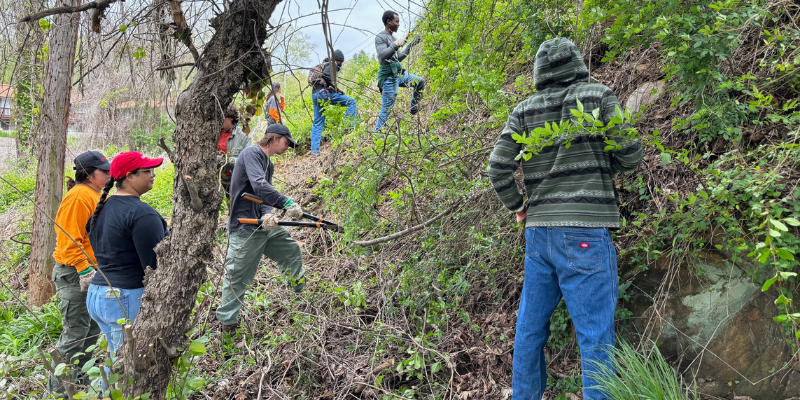
Photo: Members of Oconaluftee Job Corps sever invasive vines at the site of a future riverside park.
MountainTrue partners with Oconaluftee Job Corps for kudzu control in Cullowhee
Cullowhee Revitalization (CuRev), MountainTrue, and American Rivers are laying the groundwork for the creation of a future riverside park along the Tuckasegee River in the Cullowhee community of Jackson County, NC. One step toward the goal is to eradicate nonnative invasive plants – mainly kudzu and oriental bittersweet – from the project site, which is between Old Cullowhee Road, Wayehutta Road, and the Tuckasegee River. On April 27, 14 members of the Oconaluftee Job Corps Civilian Conservation Center completed the first steps in the process by cutting invasive vines and shrubs there.
Parrot feather control is underway in Lake Chatuge!
On May 3, Aqua Services conducted an initial treatment of the invasive aquatic plant called parrot feather that has infested the southern end of Lake Chatuge for the past two years. A survey of the treatment area on May 17 showed significantly diminished aquatic vegetation. The areas still showing vegetation consist of dead, but standing, parrot feather and other plants. Aqua Services projects the second application will happen this week. Read more about the treatment plan here.
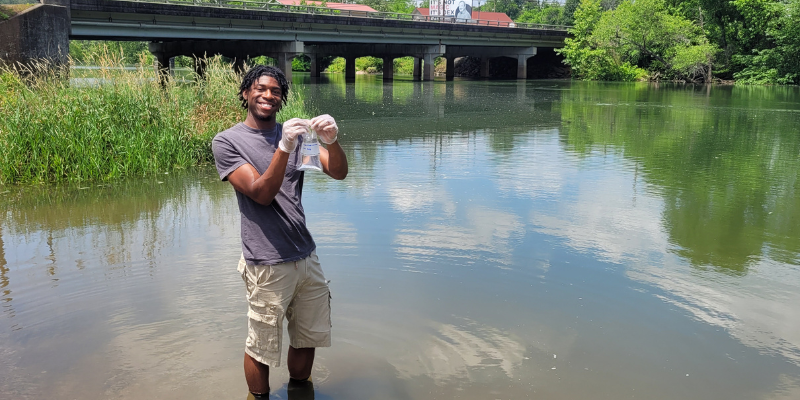
Photo: Western Region summer ‘24 Water Quality Intern, Joshua Jones, collects water samples as part of our weekly Swim Guide program.
Western Region intern starts just in time to help kick off Swim Guide in the Hiwassee Watershed
Joshua Jones of Cumming, GA, is this summer’s Western Region Water Quality Intern. Josh is a biology major minoring in music at Young Harris College. He’ll be a senior in the fall and is looking to gain experience for a possible career after graduation in environmental science or conservation. He began work just one day before the first sample collection for our Swim Guide monitoring program in the Hiwassee River Watershed; join us in welcoming Josh to the team! Click here to learn more about Swim Guide and download the app.
MountainTrue advocates for environmental priorities in Raleigh
At the beginning of May, our legislative advocacy team traveled to Raleigh to champion key environmental initiatives during the NC General Assembly’s short session. We met with several legislators to discuss stormwater pollution reduction, rural septic system repairs, E. coli monitoring in the French Broad River, and securing State Trail designations. Learn more about our advocacy efforts and legislative priorities in our latest Raleigh Report.

Photo: MountainTrue Deputy Director & General Counsel Gray Jernigan (left), Watauga Riverkeeper Andy Hill (center), and French Broad Paddle Trail Manager Jack Henderson (right) showcase three handmade paddles crafted by Broad Riverkeeper David Caldwell.
Win a sweet paddle made by the Broad Riverkeeper!
Want to paddle in style? Grab a raffle ticket for a chance to win a paddle designed and crafted by Broad Riverkeeper David Caldwell! Proceeds support MountainTrue and the Broad Riverkeeper program. This paddle is made of walnut, basswood, oak, and mahogany; it’s 150 cm long and weighs 32 oz. Unlike most “production” paddles, which have a hard finish, Caldwell Carvings’ paddles have an oil finish that is warm to the touch and easily maintained. The raffle winner will be drawn on September 14. Click here for full guidelines or to purchase tickets.
Just released: Pirani x MountainTrue reusable Hellbender cup
Pirani’s mission is to empower everyday heroes in safeguarding our planet through raising eco-awareness and creating high-quality, sustainable solutions to single-use products. Forget those disposable party cups and party on sustainably! Sales of these special edition cups benefit MountainTrue. Get your Hellbender cup now (and receive free shipping on your Pirani cup through the end of June!)
MountainTrue partners with Sugar Hollow Solar
Something exciting is brewing in the heart of the Southern Blue Ridge Mountains — a new collaboration between MountainTrue and Sugar Hollow Solar, a forward-thinking solar power company! This partnership isn’t just about harnessing the sun’s energy; it’s about fostering a community committed to a greener, more sustainable future. From now until September 30, 2024, Sugar Hollow Solar is running an inspiring referral program. For every new customer who signs a solar contract based on your referral, Sugar Hollow Solar will generously donate $50 to MountainTrue. And that’s not all – as a token of appreciation, you, the referrer, will receive $250. But if you’re feeling particularly generous, you can opt to have the full $300 benefit go to MountainTrue. To be a part of this impactful program, visit Sugar Hollow Solar’s Referral Page, send an email to hello@sugarhollowsolar.com, or give them a call at (828) 776-9161. Learn more about this exciting partnership on our blog.
